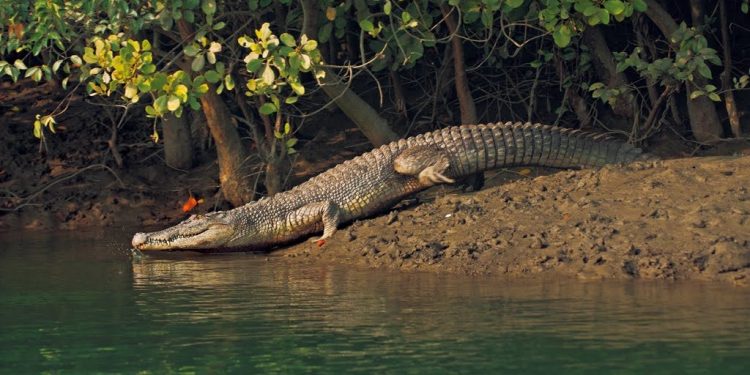Kendrapara: The estuarine crocodile population has increased in Bhitarkanika National Park. The park has re-established itself as an ideal habitation corridor for the reptiles, according to the census figures released by the Forest department Tuesday.
In the latest headcount this year at least 1,784 salt-water crocodiles were found this year in the water-bodies of Bhitarkanika river system and Mahanadi deltaic region in Kendrapara district compared to 1,768 in 2020, Divisional Forest Officer of Rajnagar mangrove (Wildlife) Forest Division, JD Pati said.
Estuarine crocodiles are also found in the Sundarbans in West Bengal, which has India’s largest mangrove cover, besides in the mangrove wetlands of the Andaman Islands. But the population density of crocodiles in their wild habitat here is more pronounced, he said.
The census was conducted both in day and night hours. The exercise went off smoothly due to the favourable climatic conditions such as clear and sunny weather, low day and night temperatures in the water and favourable tide conditions, Pati informed.
The census breakup of the crocodiles is 564 hatchlings (32%), 378 yearlings (21%), 338 juveniles (19%), 158 sub-adults (9%) and 346 adults (19%).
The maximum number of 1,409 crocodiles were spotted in Kanika Wildlife Range, which include forest blocks and rivers from Khola to the confluence of Bhitarkanika and Pathasala and beyond in Brahmani-Baitarani River systems. A total 265 crocodiles are there in Rajnagar WL Range.
In Mahanadi delta 76 crocodiles were counted in Mahakalapada wildlife range and in Gahirmatha wildlife range 34 reptiles were seen. The death of four crocodiles was recorded after the last census.
The national park is crisscrossed by innumerable water inlets, creeks and nullahs of the Bhitarkanika river system.






































